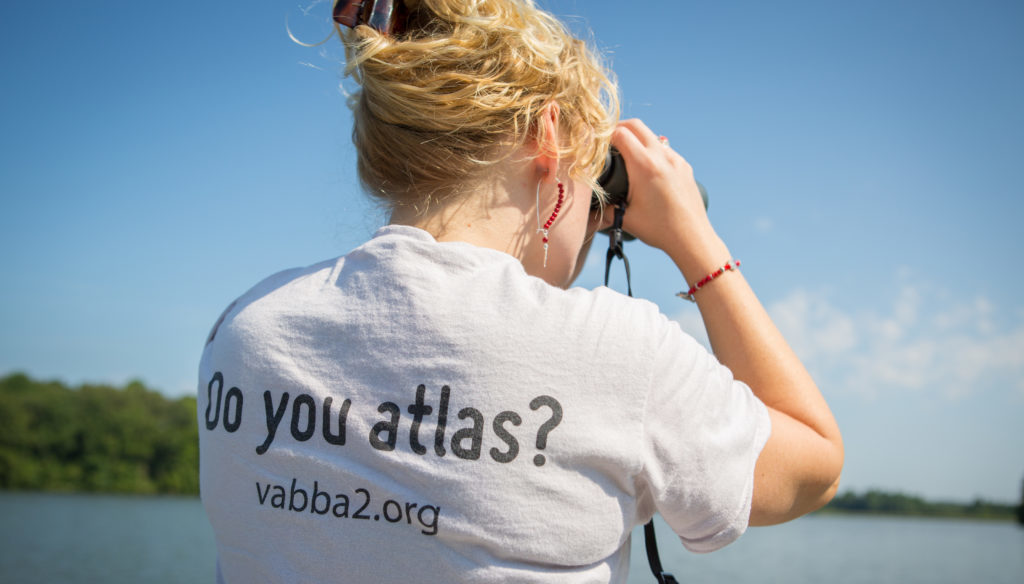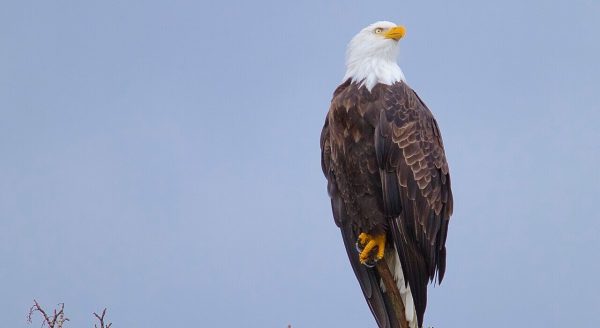
Conducting an Atlas survey at Amelia Wildlife Management Area. Photo by Meghan Marchetti.
The 2nd Virginia Breeding Bird Atlas (VABBA2), a project of DWR, the Virginia Society of Ornithology and the Conservation Management Institute at Virginia Tech, is kicking off its third season! This season is particularly relevant because 2018 is the Year of the Bird, a celebration of birds and a call-to-action for people to help birds in meaningful ways. Now is a great time to harness your interest in birds and the great outdoors by contributing to a homegrown project that aims to make a difference for bird conservation right here in Virginia!

Bald eagle on a branch. Photo by Jerry McFarland
The VABBA2 is the largest bird-focused citizen science project in the Commonwealth. Its goal is to describe the breeding status and geographic distribution of our 210+ breeding bird species across the state. These results will be compared to those of the first Atlas (1985-1989) to document how bird populations have changed in Virginia over the past 30 years. This information will be invaluable in helping to assess bird conservation priorities and target on-the-ground conservation action.
Over 750 volunteers have contributed data to the VABBA2. However, there are large swaths of Virginia that remain un-surveyed, and we need your help. Now in Year 3, we are at the project’s midpoint – this is the perfect time to become involved!
To get started, go to the VABBA2.org website and follow these easy steps:
- Check out the Atlas Block Explorer, an interactive map, where you can review what priority blocks still need surveying, including those near you. (Blocks are geographic areas within which Atlas bird surveys take place, and together cover the entire state of Virginia.) You can sign up to be officially responsible for a block or can survey blocks on an informal basis.
- Download and review the handbook and other key materials from the Handbook and Materials Familiarize yourself with the survey protocols, so that you feel comfortable with them prior to beginning Atlas activities in the field.
- Visit and explore the VABBA2 eBird portal, which is where you will enter your Atlas observations. If you are new to eBird, check out some of the how-to tutorials on the page.
- Get out in the field! Start by getting to know your Atlas block and identify sites where you will conduct your surveys. Space your surveys throughout the bird breeding season (May- July).
- Have questions or need help? Use the Atlas Block Explorer to identify the region where you plan to atlas, then contact the appropriate Regional Coordinator through the Atlas.

Hummingbird eating from flower Photo by Bob Schamerhorn.
Those with bird identification skills are highly desired, but we also welcome contributions from beginners, who can be paired up with more experienced Atlas volunteers. Surveys are easy to conduct and can be done at times that fit into your schedule. Most important are an enthusiastic attitude and a willingness to learn!



